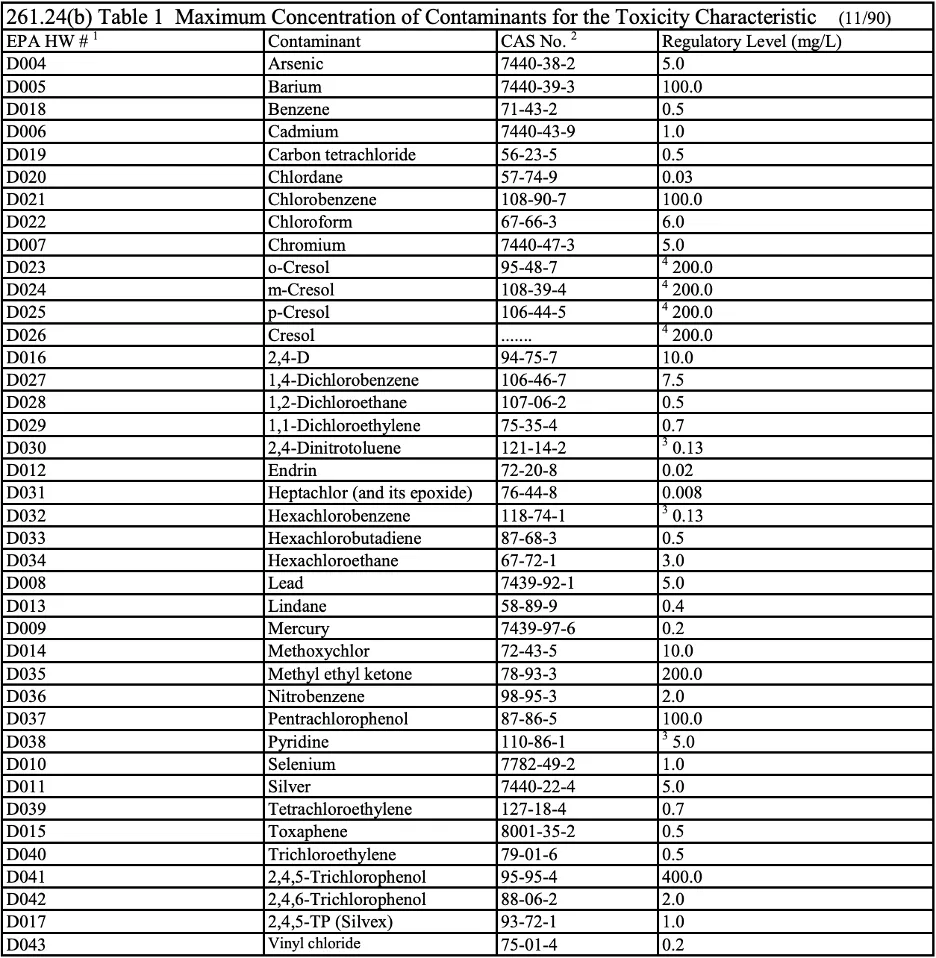Could the Waste Generated by Your Facility be Toxic?
- Elk Environmental Services
When we hear the word toxic, we know it’s describing something bad and is true when defining toxic waste. Hearing these words together causes great concern. Toxic waste has been around since the creation of chemicals (and chemical compounds) that make the products we use every day, such as plastics, waterproof coats, and non-stick cookware. While these products make our lives easier, they can damage the environment and cause health issues. Thus, toxic waste merits regulation because it is defined as hazardous by the Environmental Protection Agency’s (EPA) Resource Conservation and Recovery Act. The EPA established the four hazardous waste characteristics to help waste generators classify their hazardous waste. In our hazardous waste characteristic blog series, we have discussed three of the hazardous waste characteristics (ignitability, corrosivity, and reactivity). In this blog, we discuss the fourth hazardous waste characteristic toxicity.
What Exactly is Toxicity?
Toxic waste is a solid waste that is harmful when ingested or absorbed. When toxic waste is disposed at a landfill, contaminated liquid can leach from the waste and into ground water. It exhibits the characteristics of toxicity if the extract from a representative sample of the waste contains any of the contaminants listed in Table 1 (below) at the concentration equal to or greater than the respective value given in the table. To determine if a solid waste is toxic, the Toxicity Characteristic Leaching Procedure, test Method 1311, in “Test Methods for Evaluating Solid Waste, Physical/Chemical Methods,” EPA Publication SW-846, must be performed. This chemical analysis identifies hazardous elements in the extract and gives a rating as to how dangerous the waste is to the environment.
Toxic waste also has an EPA Hazardous Waste Number specified in Table 1, which corresponds to the toxic contaminant causing it to be hazardous.

- Hazardous Waste Number
- Chemical Abstracts Service Number
- Quantitation limit is greater than the calculated regulatory level. The quantitation limit therefore becomes the regulatory level.
- If o-, m-, and p-Cresol concentrations cannot be differentiated, the total cresol (D026) concentration is used. The regulatory level of total cresol is 200mg/l.
The Most Common Toxic Substances
Per the EPA, there is a long list of toxic substances that affect the environment and humans. These substances are found in a variety of products, from building materials to clothing. However, there are three substances on the list that are the most common.
- Formaldehyde – This contaminant is used in more products than you think. It’s in resins found in composite wood products, building materials and insulation, household products, preservatives, and fertilizers and pesticides.
- Mercury – One of the many elements found in the earth’s crust, mercury comes in three forms: elemental (metallic) mercury, inorganic mercury compounds, and methylmercury and other organic compounds.
- Lead – It’s an element found in small amounts in the earth’s crust. The most exposure comes from fossil fuels, lead-based paint, pipes, plumbing materials, gasoline, batteries, and ammunition.
Elk has over 30 years of experience and expertise in transporting and disposing of toxic hazardous waste to appropriate facilities. We also provide drums and totes for storage and transport. Contact us today to learn how our waste management services can benefit your facility!
